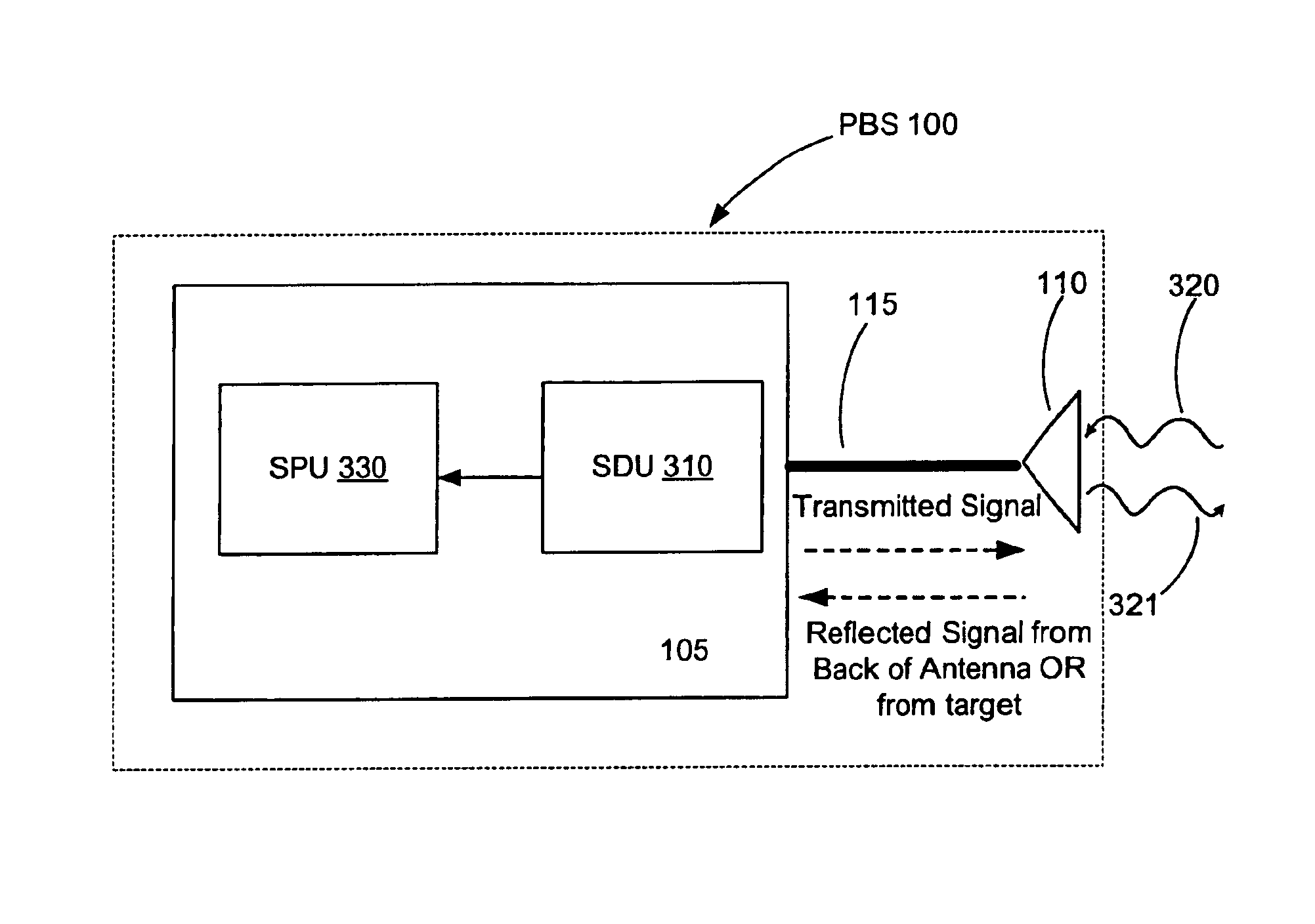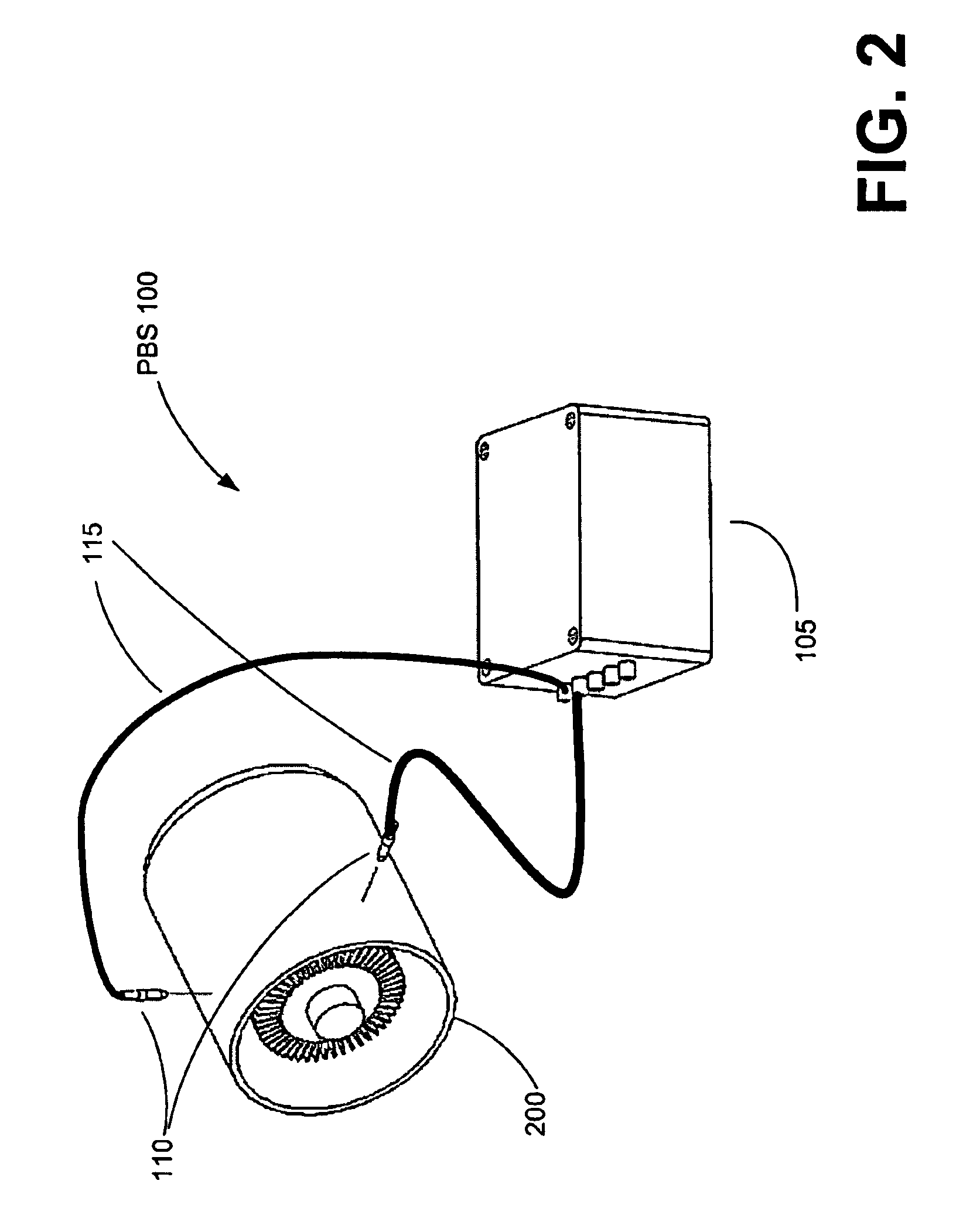Method and system for calibration of a phase-based sensing system
- Summary
- Abstract
- Description
- Claims
- Application Information
AI Technical Summary
Benefits of technology
Problems solved by technology
Method used
Image
Examples
Embodiment Construction
Exemplary embodiments of the present invention provide a calibration technique for a phase-based sensing (PBS) system, or sensing system, such as a phase-based radar system The calibration for the PBS system will now be described more fully hereinafter with reference to FIGS. 1-15, in which embodiments of the invention are shown. FIGS. 1-2 provide illustrations of implementations for an exemplary PBS system with calibration functionality. FIG. 3 provides a block diagram of an exemplary PBS system, with components of the PBS system illustrated in more detail in FIGS. 4, 6 and 7. FIGS. 5A and 5B illustrate a typical antenna / filter reflection coefficient and a representative sweep of the transmit frequency during a calibration task. FIGS. 8, 9, and 10 are representative phasor diagrams used to graphically illustrate the mathematical techniques of the calibration task. FIG. 11 represents how a microwave standing wave can be set-up between the transceiver and the antenna / target for two d...
PUM
 Login to View More
Login to View More Abstract
Description
Claims
Application Information
 Login to View More
Login to View More - R&D
- Intellectual Property
- Life Sciences
- Materials
- Tech Scout
- Unparalleled Data Quality
- Higher Quality Content
- 60% Fewer Hallucinations
Browse by: Latest US Patents, China's latest patents, Technical Efficacy Thesaurus, Application Domain, Technology Topic, Popular Technical Reports.
© 2025 PatSnap. All rights reserved.Legal|Privacy policy|Modern Slavery Act Transparency Statement|Sitemap|About US| Contact US: help@patsnap.com



